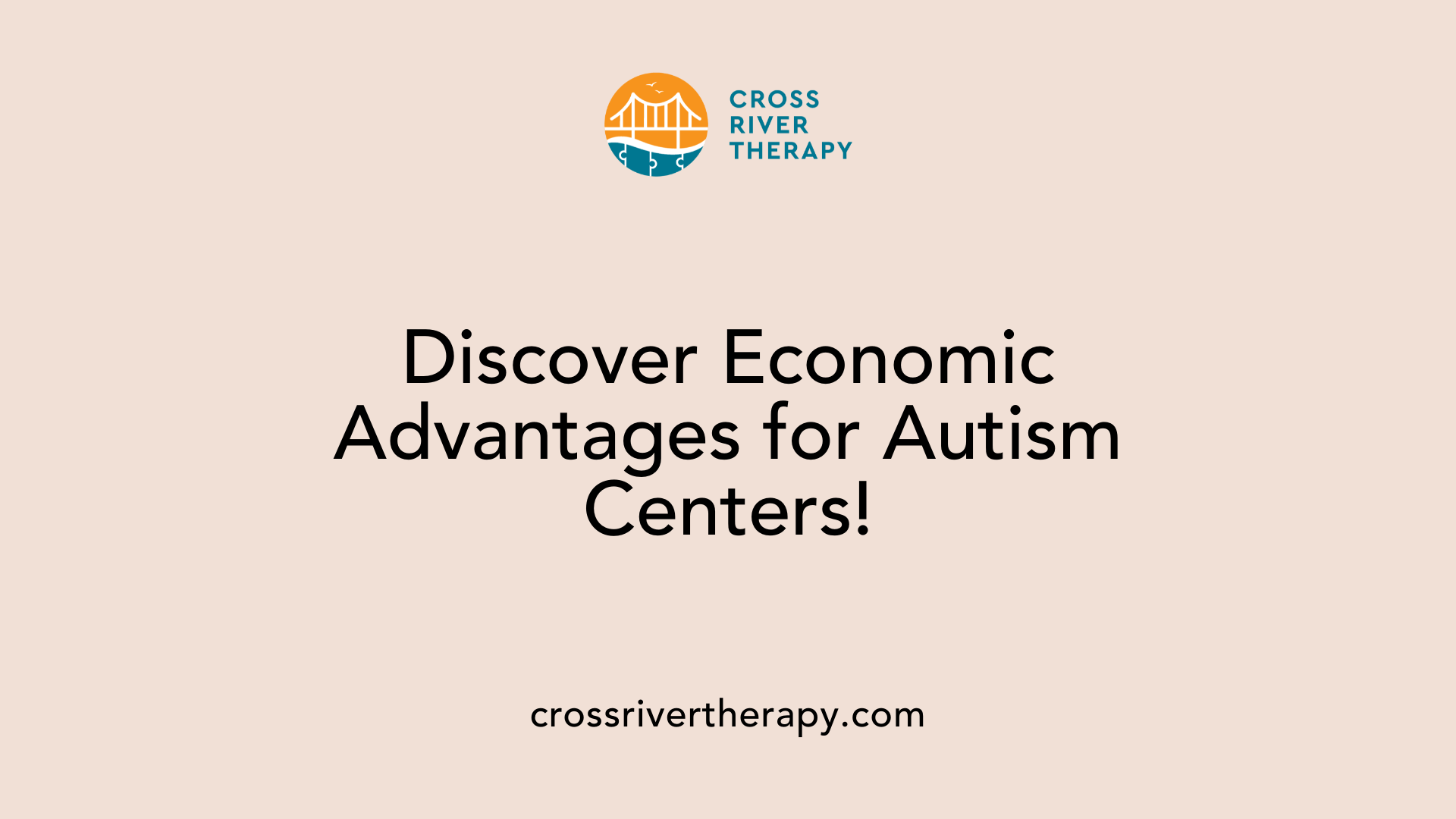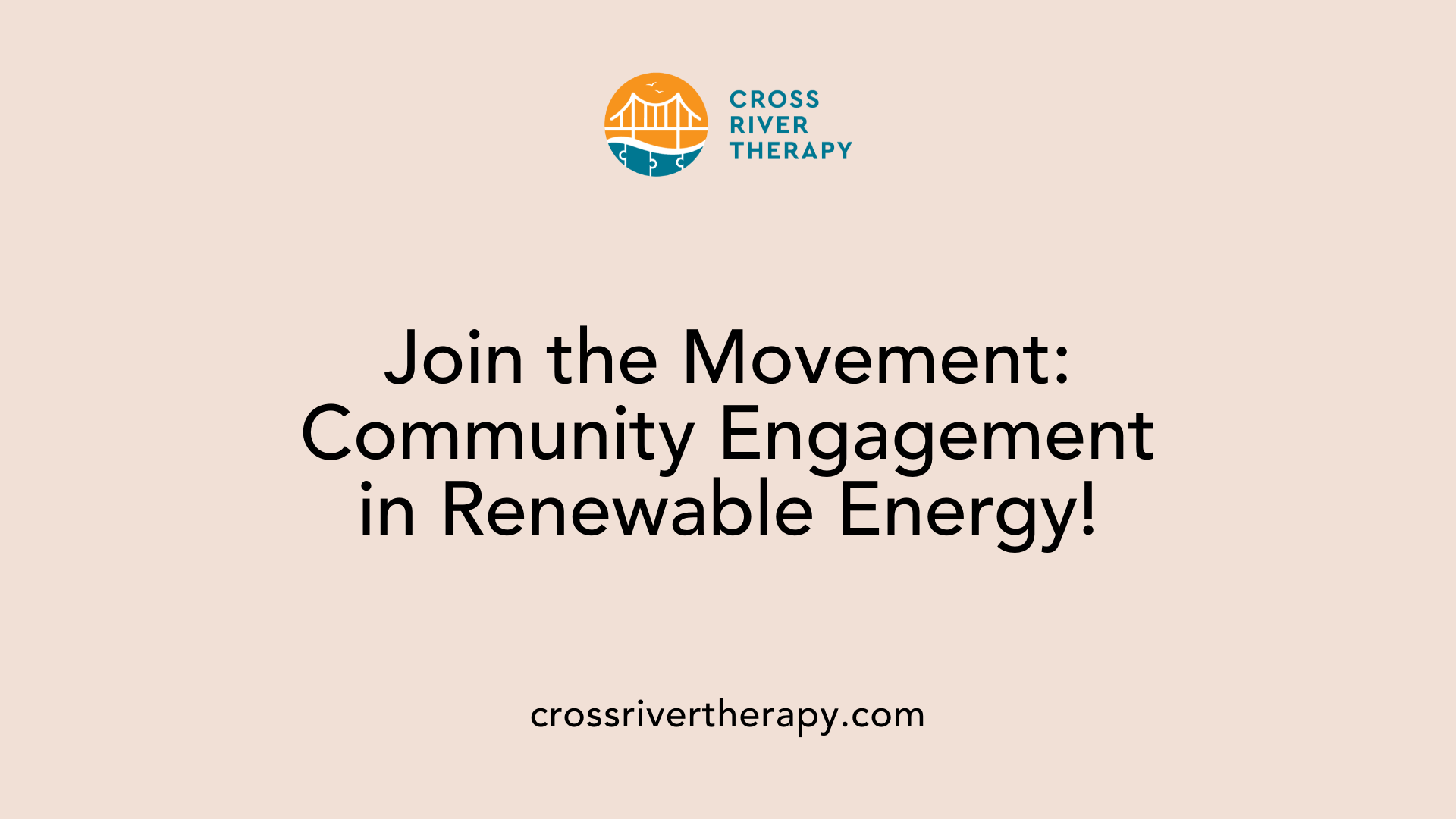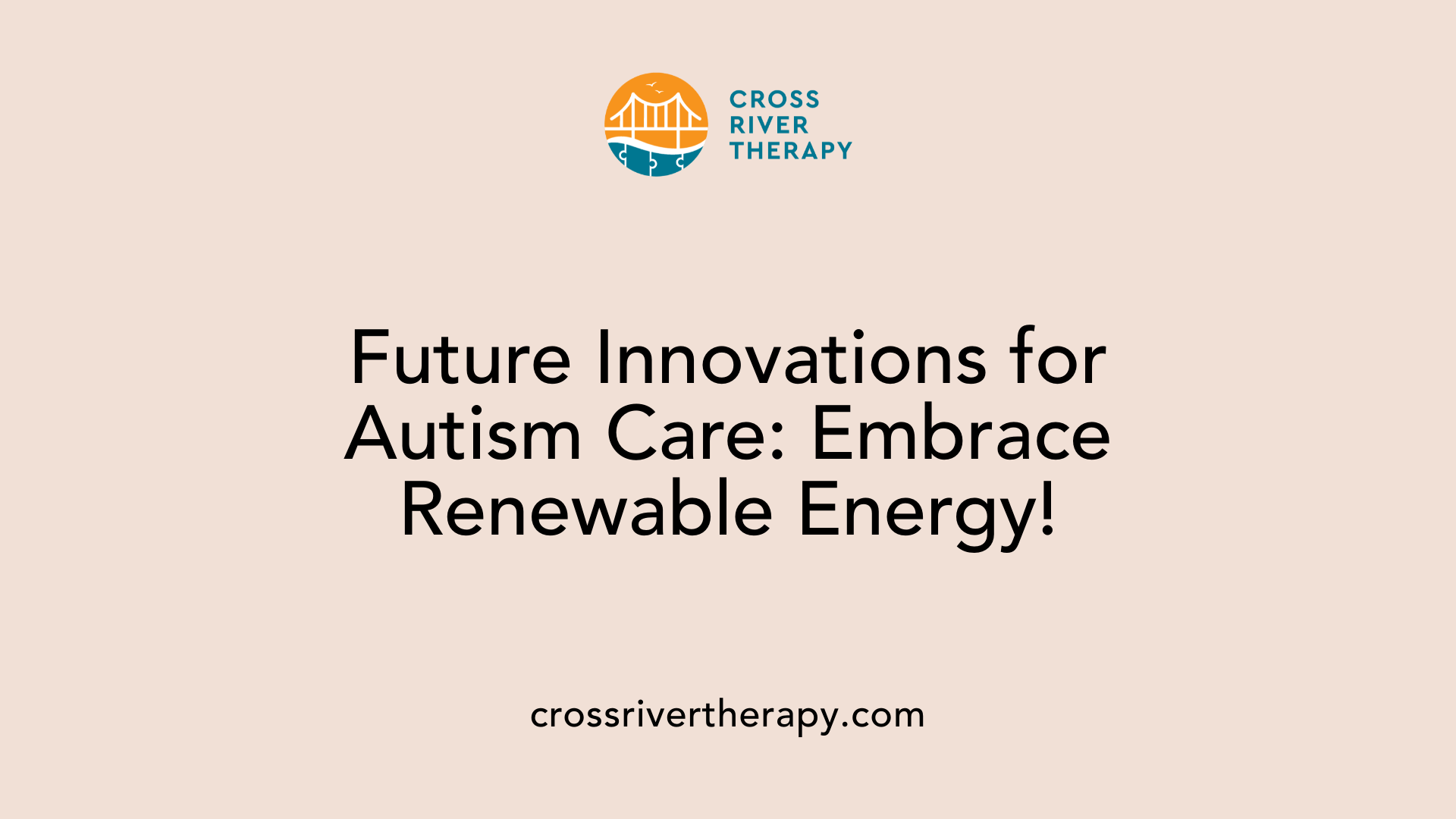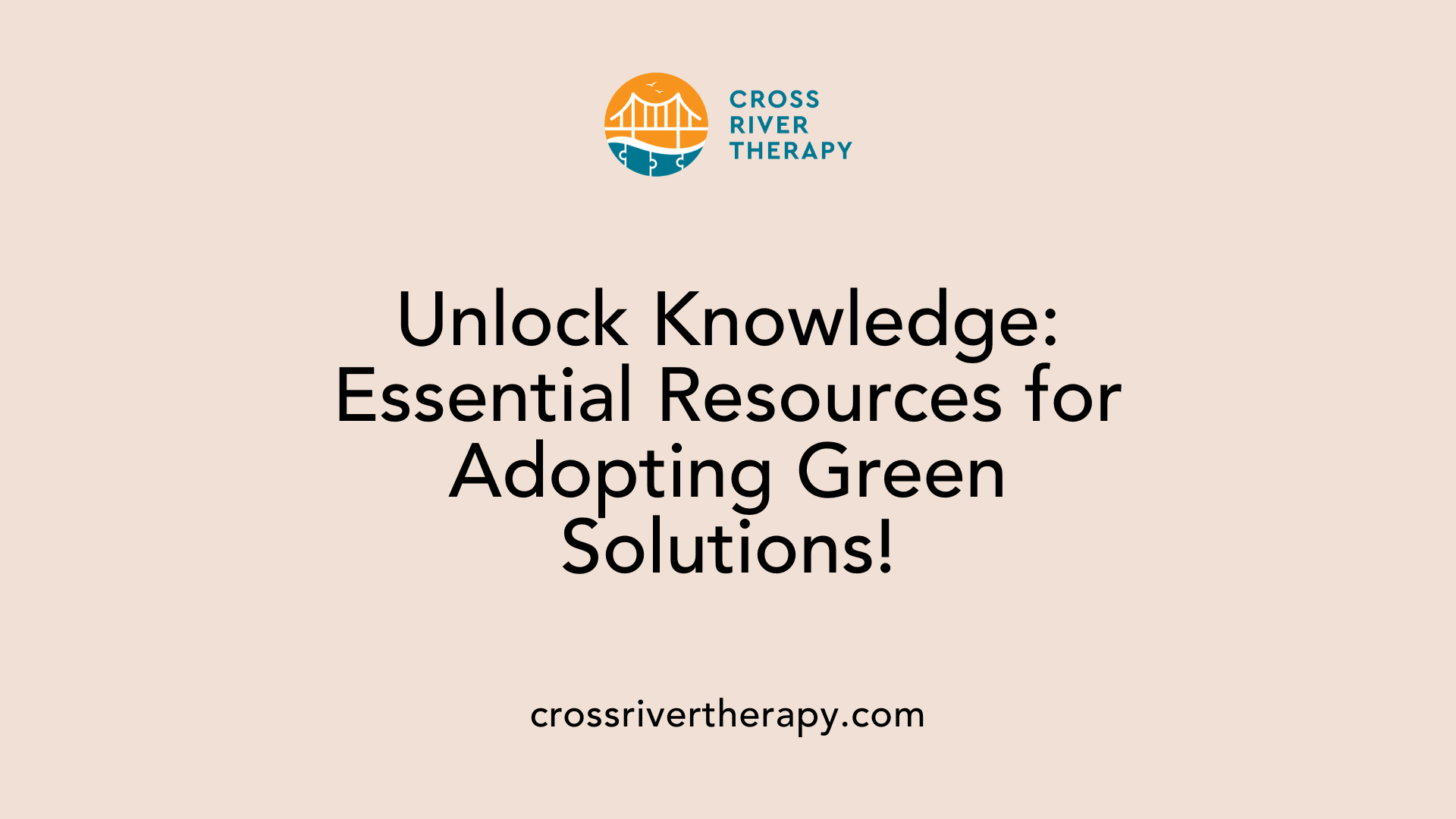Introduction to Renewable Solutions in Autism Care
As awareness grows regarding both environmental sustainability and the specialized needs of autistic individuals, integrating eco-friendly energy solutions into autism community centers has emerged as a promising approach. These solutions not only offer financial efficiency but also cater to the environmental and sensory needs of individuals with autism, fostering healthier living and learning environments. This article explores how renewable energy can transform autism centers, highlighting benefits, costs, and success stories within the community.
Economic and Environmental Benefits of Renewable Energy

Eco-friendly energy solutions can lead to savings of 20% to 50% in utility costs for autism community centers, enabling them to reallocate resources towards vital programs like therapies and educational services. For instance, centers like the Pacific Autism Family Centre have reported operational cost reductions by transitioning to renewable sources, showcasing that facilities can save $6,000 to $12,000 annually by adopting solar energy.
These financial efficiencies equate to significant figures, with overall utility savings allowing for greater investment in direct care resources. This relief is particularly crucial as many autism centers face ongoing operational expenses that can be alleviated through sustainable practices like solar and wind energy adoption.
How does using renewable energy impact the environment?
Renewable energy reduces the carbon footprint of autism centers, contributing to a healthier environment. The implementation of solar power can lead to decreases in greenhouse gas emissions, with potential reductions reaching up to 90%. Such initiatives align the centers with eco-friendly principles while improving indoor air quality, which is essential for individuals with autism who may be sensitive to pollutants.
Moreover, community involvement in promoting and adopting renewable energy practices fosters a culture of sustainability, enhancing the environmental education of families in the autism community. This dual focus on economic savings and environmental stewardship not only supports the longevity of autism services but also contributes to a healthier, more sustainable world for everyone.
Health and Well-being Impacts on Individuals with Autism

How does renewable energy improve health and well-being for individuals with autism?
Renewable energy solutions play a significant role in enhancing the health and well-being of individuals with autism. By predominantly using sources like solar and wind energy, autism centers can significantly improve indoor air quality. This reduction in pollutants is especially vital for individuals with autism, who may have heightened sensitivities to their surroundings.
Improved Indoor Air Quality
Utilizing eco-friendly energy sources fosters cleaner air within autism support environments. Better air quality can lead to a more soothing atmosphere which is conducive to the respiratory health of people with autism, reducing irritability and promoting a sense of calm.
Sensory-Friendly Environments
The implementation of energy-efficient technologies, such as LED lighting, supports the creation of sensory-friendly spaces. These systems not only consume less energy but also offer softer, more adjustable lighting options which can ease sensory overload, making environments more comfortable for individuals who might otherwise struggle with harsh lighting.
Reduction of Sensory Overload
Employing energy-efficient solutions helps manage sensory overload for those on the autism spectrum. Features like smart thermostats can maintain a stable temperature, while advanced lighting options allow for controlling brightness, directly addressing sensory needs and enhancing emotional stability in these settings.
Sustainability and Community Engagement

Community involvement plays a crucial role in the successful implementation of renewable energy projects at autism centers. By engaging families through educational initiatives, these centers can foster collaboration and raise awareness about the benefits of sustainable practices.
Through workshops, webinars, and community events, families learn about renewable energy sources such as solar and wind power. This education empowers them to understand the positive impacts of sustainability on both the environment and their loved ones.
Moreover, community engagement can lead to collaborative projects, such as community solar programs, where families unite to invest in shared renewable energy solutions. These initiatives not only save costs—often reducing energy bills by $50 to $150 monthly—but also cultivate a sense of belonging and support among families.
By strengthening community ties, autism centers backed by sustainable energy solutions can create an ethos of shared responsibility and support. This collaboration ultimately enhances the quality of care provided to individuals with autism, illustrating the transformative potential of collective action towards sustainable energy adoption.
Below is a summary of how community engagement intersects with renewable energy initiatives:
| Aspect |
Description |
Benefits |
| Community Involvement |
Families participate in renewable projects |
Builds trust and mutual support |
| Educational Initiatives |
Workshops on sustainability and energy |
Raises awareness and knowledge |
| Strengthening Ties |
Joint projects and initiatives |
Enhanced community bonding and care sharing |
Renewable Technologies and Autism Care Centers
What renewable technologies are suitable for autism care centers?
Solar and wind energy emerge as primary renewable sources suitable for autism care centers, while hydro power is also a viable option. By integrating advanced energy storage solutions, these technologies can provide a consistent energy supply, catering to the unique demands of autism support facilities.
Benefits of Solar Power
- Cost Savings: Solar panels can reduce operational costs significantly—estimates suggest annual savings of between $6,000 and $12,000.
- Sustainability: Decreases reliance on fossil fuels, leading to reduced carbon emissions by up to 80%.
- Environmental Health: Enhances air quality by cutting down on pollutants, which is crucial for individuals with autism who may have sensitivities to environmental factors.
Wind Energy Applications
- Reliable Energy Generation: Wind turbines can utilize consistent wind patterns to produce electricity.
- Cost Efficiency: Similar to solar, wind energy helps reduce electricity bills, allowing centers to invest in therapeutic services.
Eco-friendly Architectural Features
- Natural Materials: Incorporating these can improve energy efficiency and create calming environments conducive to therapeutic practices.
- Energy-efficient Designs: Features such as smart thermostats and LED lighting help manage consumption, reducing sensory overload and enhancing comfort for those with autism.
Case Studies: Success Stories from Autism Centers
What are some successful examples of renewable energy implementation in autism centers?
One standout example is the Pacific Autism Family Centre. This facility transitioned to solar energy, resulting in a remarkable 36% reduction in energy consumption. This switch not only contributed to a cleaner environment but also produced substantial financial savings. Through adopting renewable energy, the center has redirected these savings towards essential services for individuals with autism, amplifying the benefits of their operational changes.
Reported benefits and savings
The financial impact has been significant, with estimates suggesting annual savings falling in the range of $6,000 to $12,000. Such savings allow autism centers to allocate funds that would otherwise go to utility costs toward critical therapies and educational programs. Beyond cost savings, there are also improvements in indoor air quality, which are vital for enhancing the well-being of individuals with autism. The transition to solar energy has effectively reduced their carbon footprint while improving the overall operational efficiency of the center.
Lessons learned from implementation
The Pacific Autism Family Centre demonstrates that transitioning to renewable energy sources, such as solar power, can yield multiple advantages. Centers are encouraged to involve community engagement through educational initiatives about the benefits of eco-friendly energy. This approach strengthens the support network among families and stakeholders while fostering sustainability awareness within the autism community. Furthermore, centers can explore available financial incentives, such as grants and solar project partnerships, to ease the initial investment needed for these sustainable solutions.
By examining successful implementations like that of the Pacific Autism Family Centre, other autism support facilities can find valuable insights on effectively integrating renewable energy solutions.
Economic Stability Through Renewable Energy
How does renewable energy contribute to economic stability for autism centers?
Renewable energy plays a pivotal role in fostering economic stability for autism centers. By significantly reducing utility bills—often by 20% to 50%—these centers can redirect funds towards critical services for individuals with autism. For instance, transitioning to solar energy has resulted in annual savings of $6,000 to $12,000 for many facilities, enhancing their financial health.
Job creation and financial savings
The adoption of sustainable practices not only diminishes operational costs but also drives job creation within the community. As centers invest in renewable energy technologies, they contribute to local employment opportunities in green energy sectors. This synergy fosters a broader economic uplift for autism-inclusive communities.
Reallocation of resources to enhance services
The funds saved through lower energy expenses can be strategically reinvested in essential therapies and support services, improving the overall quality of care. This allows these centers to enhance their program offerings, ultimately benefiting individuals with autism and their families. Moreover, the long-term investment in energy-efficient systems ensures a steady return, allowing centers to maintain and grow their capabilities over time.
Thus, integrating renewable energy yields substantial benefits, creating a sustainable economic environment that supports both the centers and the individuals they serve.
Funding Opportunities for Eco-friendly Initiatives
What funding opportunities exist for autism centers adopting renewable energy?
Autism centers looking to adopt renewable energy solutions have access to multiple funding avenues. Grants and financial assistance programs specifically targeted towards non-profit organizations can provide crucial support. These funds can help with costs related to implementing eco-friendly technologies like solar panels and wind turbines.
Incentives for adopting green energy
In addition to grants, centers can benefit from tax incentives, such as the federal Investment Tax Credit (ITC). This incentive allows organizations to deduct a portion of their solar energy installation costs from their federal taxes, making it more feasible for them to invest in green solutions. These financial tools not only help offset the initial investment but also pave the way for long-term sustainability.
Examples of funding success
Successful examples of funding include projects like the Pacific Autism Family Centre, which demonstrated that transitioning to solar energy can yield substantial savings on utility expenses. This facility reduced its energy costs significantly, demonstrating how proper funding for eco-friendly initiatives can lead to enhanced resources for therapies and services employed at autism centers. Combined with community engagement initiatives, these funding opportunities solidify the commitment towards a greener and more effective care environment for individuals with autism.
Challenges and Solutions in Integrating Renewable Energy
What are some challenges autism centers face when integrating renewable energy, and how can they overcome them?
Integrating renewable energy solutions in autism centers offers numerous benefits but presents various challenges. One of the most significant hurdles is the initial investment cost. Many centers operate on tight budgets, making it difficult to allocate funds for new technologies. Logistical barriers, such as site assessments and installation disruptions, can also impede progress.
Despite these challenges, effective strategies can facilitate smoother transitions to renewable energy. Professional collaboration is crucial—partnering with experienced green energy consultants can help navigate the complexities of installation. Additionally, engaging in community education initiatives raises awareness of the benefits of renewable energy, galvanizing local support.
Furthermore, leveraging financial incentives plays a pivotal role in making renewable energy more accessible. Programs like tax credits and grants can significantly reduce upfront installation costs. For example, the federal Investment Tax Credit (ITC) covers a substantial portion of solar energy systems, making sustainable energy options more feasible.
In summary, while barriers exist, the integration of renewable energy in autism centers can be effectively managed through strategic collaboration, community education, and financial support.
Sensory-Friendly Technologies Enabled by Renewable Energy
How do sensory-friendly technologies enhance environments in autism centers?
Sensory-friendly technologies play a crucial role in creating supportive environments within autism community centers. Adjustable lighting systems and smart thermostats are designed to meet the unique sensory needs of individuals on the autism spectrum. For instance, LEDs consume less energy and emit calming light, which can significantly reduce sensory overload and enhance comfort.
Smart thermostats allow for precise temperature control, fostering a stable environment that can ease anxiety and promote relaxation. By integrating these technologies, centers can ensure that each individual has a comforting atmosphere tailored to their sensory preferences.
Moreover, such adjustments not only create optimal sensory environments but also contribute to positive therapeutic outcomes. When comfort is prioritized, individuals are more likely to engage in therapies effectively, facilitating higher levels of emotional stability and developmental progress.
Through the strategic use of renewable energy to power these technologies, autism centers can establish a calmer, more nurturing environment, significantly enhancing the quality of care and support provided to individuals with autism.
Broader Impacts of Eco-friendly Energy Adoption
What are the broader impacts of adopting eco-friendly energy in autism centers?
Adopting sustainable energy practices provides numerous benefits beyond immediate cost savings. One significant impact is the improvement in quality of life for individuals with autism. By transitioning to eco-friendly energy sources like solar and wind, centers can achieve better indoor air quality. This is crucial for individuals sensitive to pollutants, as enhanced air quality can positively affect their overall health and comfort.
Quality of Life Improvements
Furthermore, renewable energy sources contribute to a more supportive atmosphere by reducing environmental pollutants. This fosters healthier interactions and enhances the community's well-being. The introduction of energy-efficient designs, such as LED lighting and smart HVAC systems, can create calming environments that cater specifically to the sensory needs of individuals with autism.
Behavioral and Developmental Progress
The psychological and emotional stability of those on the autism spectrum can see improvement as they experience a more consistent and nurturing environment. Studies suggest that eco-friendly energy solutions may yield positive behavioral outcomes, promoting a better understanding of sustainability among individuals and their families.
Community Health and Sustainability
In terms of community health, involvement in renewable energy initiatives strengthens ties among families and educational outreach. These initiatives often lead to collaboration that enhances sustainability awareness, resulting in a collective effort towards environmental conservation while meeting the unique demands of autism support services.
Innovative Trends in Renewable Energy for Autism Centers

What future trends in renewable energy could benefit autism centers?
Innovative trends like advanced energy storage systems and community solar projects are emerging as significant opportunities for autism centers. These technologies not only promote resilience but also ensure a consistent energy supply during outages, which is crucial for uninterrupted care services.
Integration into autism-friendly designs
The integration of renewable energy solutions, such as solar panels and energy-efficient technologies, is being thoughtfully aligned with autism-friendly designs. This synergy creates environments that minimize sensory overload while optimizing comfort. Adjustable lighting and smart home features can further enhance therapeutic engagement, making spaces more accommodating for individuals on the autism spectrum.
The sustainable nature of renewable energy sources contributes to the resilience of autism centers. Facilities utilizing renewables witness decreased operational costs and improved economic stability, allowing funds to be redirected towards essential therapies and educational resources. This reliability not only supports the centers' operational efficiency but also fosters a nurturing atmosphere for individuals with autism, enhancing their well-being and development.
| Trend |
Benefits |
Examples |
| Advanced Energy Storage |
Ensures energy availability during outages |
Tesla Powerwall |
| Community Solar Projects |
Allows shared solar resources, reducing costs |
Local solar co-ops |
| Integration with Design |
Minimizes sensory overload and boosts comfort |
Adjustable lighting systems |
| Sustainability Practices |
Enhances economic viability and supports therapy services |
Eco-friendly architecture |
Educational Resources for Implementing Green Solutions

What educational resources are available for autism centers interested in renewable energy?
Numerous resources exist to support autism centers looking to implement renewable energy solutions. Among these, online courses and webinars stand out as valuable tools. These platforms provide insights into the financial benefits of renewable energy, operational efficiencies, and environmental impacts, ensuring that organizations can make informed choices.
In addition to interactive learning, comprehensive guides and toolkits are available that outline the steps necessary for integrating green solutions into autism support facilities. These resources often include checklists, budgeting tools, and examples of successful implementations, which can streamline the transition process.
Best Practices for Autism Centers
Moreover, best practices are shared through educational content that highlights case studies, like that of the Pacific Autism Family Centre. This center has successfully reduced its carbon footprint by adopting solar energy, showcasing a prototype for others in the community. By following these guidelines, autism centers can navigate the complexities of energy transition while cultivating a healthier, more sustainable environment for individuals they serve.
| Resource Type |
Description |
Examples |
| Online Courses |
Accessible learning materials on renewable energy. |
Webinars on solar panel benefits |
| Guides and Toolkits |
Step-by-step approaches to adoption. |
Toolkit for energy-efficient upgrades |
| Best Practices |
Insights from successful autism centers. |
Case studies of energy solutions |
Conclusion: Integrating Eco-friendly Energy in Autism Care
The integration of eco-friendly energy solutions in autism community centers is a transformative initiative that promises not only economic and environmental benefits but also enhancements in care quality and community engagement. The path forward includes leveraging successful case studies, understanding available resources, and embracing new technologies. By transitioning to sustainable energy practices, autism centers can ensure a cleaner, healthier, and more supportive environment for the individuals and families they serve, thus fostering a comprehensive approach to autism care that aligns with global sustainability goals.
References